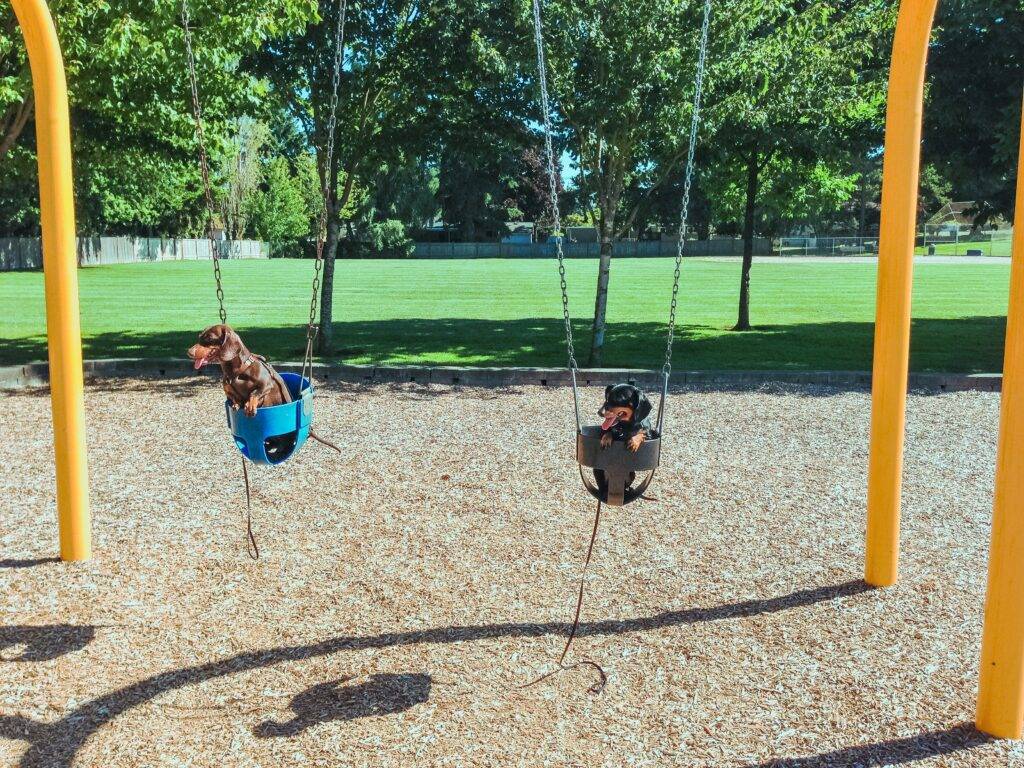A dog park is an excellent place for dogs to socialize, exercise, and play. To create a successful dog park, you need to include the right equipment to keep dogs entertained and safe. This guide will help you set up a dog park with fun and safe equipment. We’ll discuss the must-have dog park tools, how to choose the appropriate size and type of dog playground equipment, and how to maintain your pet playground equipment to ensure maximum safety and fun.

By following these tips and incorporating Ginast’s high-quality equipment pieces, like the Weave Poles, Paws Table, Ring Hoop Jump, Adjustable Hoop Jump, and Teeter Totter, you’ll create a fun, safe, and engaging environment for dogs and their owners to enjoy. Happy tails and happy trails!
The best material for a dog park depends on the specific needs and conditions of the location. For ground covering, a combination of natural grass, artificial turf, or compacted decomposed granite is recommended. Grass is soft and comfortable for dogs, while artificial turf is low-maintenance and suitable for high-traffic areas. Compacted decomposed granite is durable and provides good drainage. For dog park equipment, choose weather-resistant and durable materials such as stainless steel, heavy-duty plastic, or coated metal to ensure longevity and safety.
To make a dog playground, follow these steps:
a. Choose a suitable location: Find a flat, well-drained area with enough space for dogs to run and play.
b. Plan the layout: Designate separate areas for small and large dogs, and allocate space for equipment, seating, and waste disposal.
c. Select dog playground equipment: Choose a variety of equipment to provide mental and physical stimulation for dogs, such as agility courses, tunnels, ramps, and climbing structures.
d. Install ground covering: Use a combination of natural grass, artificial turf, or compacted decomposed granite for the surface.
e. Install equipment: Set up the dog playground equipment following the manufacturer’s guidelines and ensure it is secure and safe.
f. Add amenities: Provide seating for dog owners, waste disposal stations, and water sources for dogs and humans.
g. Establish rules and guidelines: Post clear rules for dog owners and their pets to ensure a safe and enjoyable experience for everyone.
To set up an outdoor dog area:
a. Assess the space: Determine the size and layout of the area, taking into consideration the size and number of dogs that will use it.
b. Choose appropriate ground covering: Select a surface that is comfortable and safe for dogs, such as grass, artificial turf, or compacted decomposed granite.
c. Install fencing: Enclose the area with a secure fence to keep dogs safe and contained.
d. Provide shade and shelter: Ensure there are shaded areas and shelter from the elements.
e. Add dog-friendly features: Include equipment for play and exercise, water sources, and waste disposal stations.
f. Maintain the area: Regularly inspect, clean, and maintain the outdoor dog area to ensure it remains safe and enjoyable for dogs and their owners.
When camping with your dog, ensure they have a safe and comfortable place to sleep and rest. Set up a designated area near your tent or camper with a comfortable dog bed or mat. Use a leash or tether to secure your dog to prevent them from wandering off or getting lost. Make sure your dog has access to fresh water, food, and shade during the day.
Dog parks can be both good and bad for dogs, depending on various factors. The benefits of dog parks include socialization, exercise, and mental stimulation. However, dog parks can also pose risks, such as the potential for dog fights, the spread of diseases, and injuries from poorly maintained equipment. To ensure a positive experience, choose well-maintained dog parks with separate areas for different dog sizes, follow park rules, and supervise your dog closely while at the park.
© 2025 • All Rights Reserved • Company owned by Qovenã Ventures